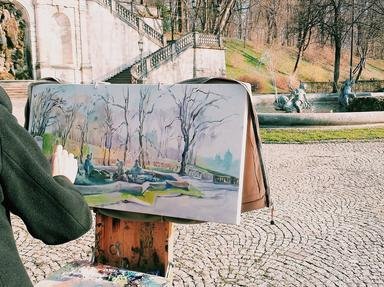Quiz Answer Key and Fun Facts
1. We start with one of the most famous early self-portraits. Who is this German artist who painted himself in 1500?
2. Remaining in the Renaissance period, who is this Italian artist who painted himself in 1506?
3. Who is this Italian Renaissance artist who painted himself a number of times? The pictured work was painted around 1562.
4. One of the great painters of the Baroque period, who is this Spanish artist who painted himself sometime around 1640?
5. Who is this Flemish Baroque artist who painted himself numerous times? The pictured work, painted around 1615, is designated "sans chapeau" to differentiate it from his other self portraits.
6. One of many self-portraits by this artist, who is the Dutch Master who painted the pictured work in 1635?
7. Who is this English portrait and landscape painter who produced this self-portrait in 1787?
8. Who is this Spanish painter from the Romantic school who painted himself in the late 1790s?
9. The next work is by one of my all-time personal favourite artists. Who is this German Romantic who painted himself in 1810?
10. Who is this English master who painted himself more than once? The pictured work is one in which he looks his youngest, painted in the early 1790s.
Source: Author
EnglishJedi
This quiz was reviewed by FunTrivia editor
LadyCaitriona before going online.
Any errors found in FunTrivia content are routinely corrected through our feedback system.

